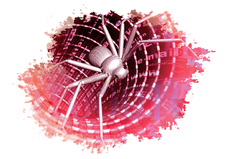Exploring the latest version of Snort
Prettying up the Pig

Get ready for a bigger and better Snort. If you're used to protecting your systems with this trusty intrusion detection tool, you'll appreciate the new features in the latest version.
Earlier this year, Cisco purchased SourceFire, the original developers of the popular Snort intrusion detection tool [1], and the world is understandably curious to know what plans the router giant might have for Snort. I spoke recently with Cisco engineer and education specialist James Risler about the Snort purchase, and he had some good insights and news.
According to Risler, the primary reason for the purchase was that Cisco needed code that improved the interoperability of Cisco devices with other security devices in the network. He also said that the purchase of Snort would make it possible to eventually support NetFlow and other protocols more easily. Risler assured me that Snort will continue to use the clever pig motif that we all know and love. The most important reason for the purchase of Snort, though, is that Cisco felt the need to improve the ability of network security professionals to analyze information.
When I was asked to take a closer look at the first Snort version since the Cisco purchase (Snort 2.9.6.2), I figured it was a good time to take a look underneath the hood and see what has changed. I'm happy to say I found some very interesting new features. This article explores what's new and improved in the latest version of Snort. If you're new to Snort, you'll also find some tips on how to get started.
[...]
Buy this article as PDF
(incl. VAT)
Buy Linux Magazine
Subscribe to our Linux Newsletters
Find Linux and Open Source Jobs
Subscribe to our ADMIN Newsletters
Support Our Work
Linux Magazine content is made possible with support from readers like you. Please consider contributing when you’ve found an article to be beneficial.

News
-
Parrot OS Switches to KDE Plasma Desktop
Yet another distro is making the move to the KDE Plasma desktop.
-
TUXEDO Announces Gemini 17
TUXEDO Computers has released the fourth generation of its Gemini laptop with plenty of updates.
-
Two New Distros Adopt Enlightenment
MX Moksha and AV Linux 25 join ranks with Bodhi Linux and embrace the Enlightenment desktop.
-
Solus Linux 4.8 Removes Python 2
Solus Linux 4.8 has been released with the latest Linux kernel, updated desktops, and a key removal.
-
Zorin OS 18 Hits over a Million Downloads
If you doubt Linux isn't gaining popularity, you only have to look at Zorin OS's download numbers.
-
TUXEDO Computers Scraps Snapdragon X1E-Based Laptop
Due to issues with a Snapdragon CPU, TUXEDO Computers has cancelled its plans to release a laptop based on this elite hardware.
-
Debian Unleashes Debian Libre Live
Debian Libre Live keeps your machine free of proprietary software.
-
Valve Announces Pending Release of Steam Machine
Shout it to the heavens: Steam Machine, powered by Linux, is set to arrive in 2026.
-
Happy Birthday, ADMIN Magazine!
ADMIN is celebrating its 15th anniversary with issue #90.
-
Another Linux Malware Discovered
Russian hackers use Hyper-V to hide malware within Linux virtual machines.

